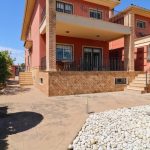The Spanish property market has witnessed a remarkable transformation over the past couple of years. Following the pandemic, there was an unprecedented surge in the demand for new build properties in Spain.
This surge was driven by consumers eager to invest their accumulated savings, resulting in double-digit growth in property prices, especially for off-plan properties.
This boom was further fuelled by the rising inflation rates. With banks offering negligible interest on savings deposits, many saw real estate as a safe haven for their funds. Investing in bricks and mortar became a preferred choice for many to shield their savings from the eroding effects of inflation.
However, as with any rapid expansion, there are bound to be some hiccups along the way. Despite the best efforts of developers, construction flaws can sometimes be overlooked.
It’s crucial for potential buyers to be aware of these pitfalls. One of the best ways to safeguard against such issues is to commission a snagging list before officially taking possession of the property.
Independent chartered surveyors, though an additional expense for the buyer, can identify even the most concealed construction flaws. These detailed reports are invaluable tools for lawyers, enabling them to advocate for their clients more effectively and ensure that any issues are rectified.
In this article, we’ll delve into the three primary construction guarantees available when purchasing off-plan property in Spain and the timeframes within which claims can be made.
- Construction Flaws: 1-Year Guarantee
For a period of one year, both the developer and the constructor are jointly accountable for any construction flaws. These are typically defects that are visible to the untrained eye and are usually identified during a snagging list inspection before the property’s completion. They pertain mainly to the final touches of the construction.
It’s advisable not to finalise the purchase until these flaws are addressed. If this isn’t feasible, buyers should consider retaining a portion of the payment until the issues are resolved, typically within a six-month window post-completion. This approach ensures that the developers remain motivated to rectify the flaws promptly.
Common examples include mismatched or missing floor tiles, chipped paint, defective doorknobs, dripping taps, and other issues arising from poor workmanship or subpar materials.
- Dwelling Hazards: 3-Year Guarantee
This category encompasses defects that directly affect the habitability of the property. Such flaws are usually more severe, posing risks to the health and safety of the inhabitants or even the environment. The guarantee for these hazards spans three years.
Some instances include damp patches in rooms leading to mould growth, malfunctioning electrical appliances, and gas leaks.
- Structural Problems: 10-Year Warranty
Often referred to as the “Seguro Decenal”, this ten-year warranty is a cornerstone of the Spanish property market. It addresses significant structural issues that jeopardise the building’s stability and can be life-threatening. An insurance firm oversees the entire construction process, ensuring that the materials and construction adhere to Spanish laws and standards.
However, it’s worth noting that the application of this warranty can be quite restrictive.
Examples of structural problems include landslides due to unstable foundations, large cracks threatening the building’s integrity, and roofs collapsing from heavy rainfall.
Understanding the Guarantee Protection Timeline
A common misconception is that these guarantees commence from the completion date at the notary. However, the countdown for these guarantees begins from the time the developer receives the “Acta de Recepción”, which always precedes the notary completion.
In Conclusion
Spain’s thriving property market is once again witnessing a surge in new construction property sales. Given this boom, it’s imperative to foster a culture of awareness around Consumer Rights. This is especially crucial for foreigners and expatriates, ensuring they are well-informed about their rights and how to exercise them in the ever-evolving Spanish property landscape.







